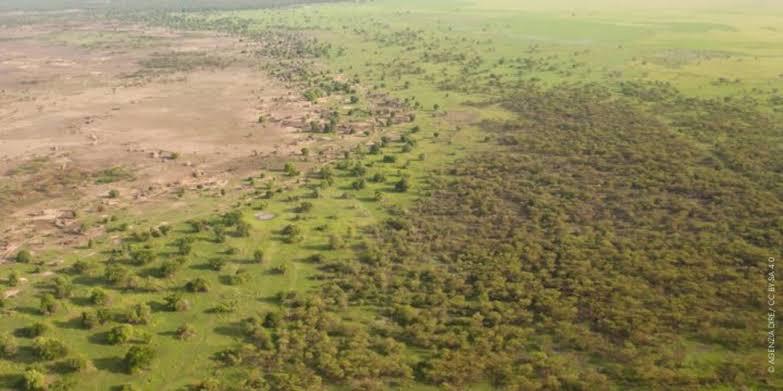
Sahara Turns Green: Should We Celebrate or Worry?
For centuries, the Sahara Desert has symbolised the extreme limits of life on Earth—a sprawling expanse of sun-scorched sand dunes and barren plains stretching across northern Africa. However, recent scientific observations and historical data suggest an intriguing phenomenon: the “greening” of the Sahara. The revival of vegetation in parts of the world’s largest hot desert is drawing attention globally, raising a critical question—should this phenomenon be celebrated as an ecological boon or viewed with concern as an indicator of looming environmental challenges?
The Green Shift: What Is Happening?
The “greening” of the Sahara is not a sudden occurrence but a gradual transformation linked to climatic changes and human activities. Satellite imagery and climate models reveal that certain regions of the desert are experiencing increased rainfall and the growth of vegetation. Areas near the Sahel, a semi-arid region bordering the Sahara, have seen the emergence of grasses, shrubs, and even trees.
Dr Martin Brandt, a geographer from the University of Copenhagen, has extensively studied these changes. In a 2020 paper published in “Nature Climate Change”, he and his team concluded that while parts of the Sahara are gaining vegetation, this process is highly uneven. Key areas of greening include southern Algeria, northern Niger, and Chad’s borderlands—regions historically vulnerable to desertification.
Why Is the Sahara Turning Green?
The Sahara’s gradual transformation is driven by a combination of natural and anthropogenic factors. Among the most significant are:
1. Climate Variability and Rainfall Patterns
Over the last few decades, there has been a slight increase in rainfall across parts of the Sahara, attributed in part to natural climate cycles such as the African Humid Period. This phenomenon is characterised by shifts in monsoon patterns, which bring sporadic rain to areas once considered desolate.
A study by the University of Arizona indicates that these rainfall changes align with long-term natural cycles observed over millennia. During the Holocene epoch, approximately 10,000 years ago, the Sahara was a lush savannah teeming with wildlife—a stark contrast to its present state.
2. Rising Temperatures and CO₂ Fertilisation
Global warming and elevated levels of atmospheric carbon dioxide have also contributed to desert greening. Higher CO₂ concentrations boost photosynthesis in plants, allowing vegetation to thrive even in marginal conditions. However, this factor raises complex questions about the broader implications of climate change, as discussed later.
3. Human Intervention and Land Management
In the Sahel, reforestation projects and sustainable land-use practices are helping reverse desertification. Initiatives such as the African Union’s Great Green Wall—a massive reforestation project spanning 8,000 kilometres—aim to restore degraded lands and combat the encroachment of the Sahara. Although still in progress, these efforts have yielded tangible results in areas like Senegal and Ethiopia.
Should We Celebrate? The Potential Upsides
The greening of the Sahara offers undeniable benefits, particularly for local communities and ecosystems. Some of the positive implications include:
1. Improved Livelihoods
For millions living near the Sahara, increased vegetation could translate into better agricultural prospects, improved food security, and economic opportunities. Crops, grazing pastures, and water sources may become more reliable, alleviating poverty and hunger in one of the world’s most vulnerable regions.
2. Biodiversity Revival
As vegetation expands, it creates habitats for wildlife, potentially restoring ecological balance. Birds, insects, and mammals that once thrived in the region during wetter periods may return, enriching local biodiversity.
3. Carbon Sequestration
More vegetation means greater carbon absorption from the atmosphere, which could play a small but significant role in mitigating climate change. Projects like the Great Green Wall are explicitly designed to harness this potential.
Reasons for Concern: The Hidden Risks
Despite its benefits, the greening of the Sahara also raises concerns. The phenomenon is a double-edged sword, revealing deeper and more troubling realities about the planet’s changing climate.
1. An Indicator of Climate Change
The increase in rainfall and vegetation may seem beneficial, but it is part of a broader pattern of global climate instability. Scientists caution that this greening is tied to unpredictable weather patterns and warming trends that could disrupt ecosystems worldwide. What benefits the Sahara may harm other regions, such as the Amazon rainforest, which is experiencing unprecedented droughts.
2. Water Resource Management
While rainfall has increased in certain areas, the sustainability of these changes remains uncertain. The sudden appearance of vegetation could lead to over-extraction of scarce water resources, exacerbating conflicts in regions already plagued by tensions over land and water.
3. Potential for Desert Expansion Elsewhere
Geophysical studies suggest that as the Sahara greens, it could destabilise atmospheric patterns, influencing monsoons and desert dynamics elsewhere. For instance, some models predict that desertification could intensify in southern Africa or parts of Asia as the Sahara undergoes transformation.
4. Challenges for Ecosystem Balance
Rapid ecological changes can disrupt existing flora and fauna, potentially introducing invasive species or creating imbalances. While vegetation expansion is generally positive, it may not always support traditional livelihoods or native biodiversity.
A Historical and Cultural Perspective
The Sahara’s transformation also has profound historical and cultural implications. Archaeological evidence reveals that early human civilisations thrived in a green Sahara thousands of years ago, leaving behind artefacts, cave paintings, and remnants of ancient settlements. If the desert becomes more hospitable again, it could offer opportunities to revisit and preserve this heritage.
At the same time, the greening trend highlights the resilience of communities living on the margins of the desert. Farmers, herders, and nomadic tribes have long adapted to changing environments, and their traditional knowledge will be invaluable in managing these shifts.
Striking a Balance: What Can Be Done?
The greening of the Sahara underscores the complexity of global climate challenges. To ensure that this phenomenon brings net positive outcomes, a multifaceted approach is necessary:
1. Monitoring and Research
Continued satellite monitoring and field research are crucial to understanding the scope and implications of these changes. International collaboration among climate scientists, ecologists, and policymakers is essential to develop adaptive strategies.
2. Sustainable Development Initiatives
Expanding initiatives like the Great Green Wall and promoting agroforestry can enhance resilience while supporting local economies. These projects must be complemented by policies that ensure equitable resource distribution and protect vulnerable populations.
3. Global Climate Action
The greening of the Sahara should serve as a wake-up call for the international community. Reducing greenhouse gas emissions and curbing deforestation are critical to stabilising global ecosystems and preventing more extreme weather events.
4. Education and Community Engagement
Empowering local communities with education, resources, and decision-making power will enable them to adapt effectively to changing environments. Traditional practices can be integrated with modern techniques to create sustainable solutions.
Conclusion: A Mixed Legacy
The Sahara’s unexpected transformation into a greener landscape is a story of both promise and peril. While it offers hope for environmental restoration and economic renewal, it also underscores the far-reaching impacts of climate change and the delicate balance of Earth’s ecosystems.
As humanity grapples with these changes, celebrating the greening of the Sahara must be tempered by vigilance and responsibility. By fostering a holistic approach that considers both immediate benefits and long-term risks, we can navigate this phenomenon wisely, ensuring that it becomes a symbol of resilience rather than a warning of further instability.
Aric Jabari is a Fellow, and the Editorial Director at the Sixteenth Council.



